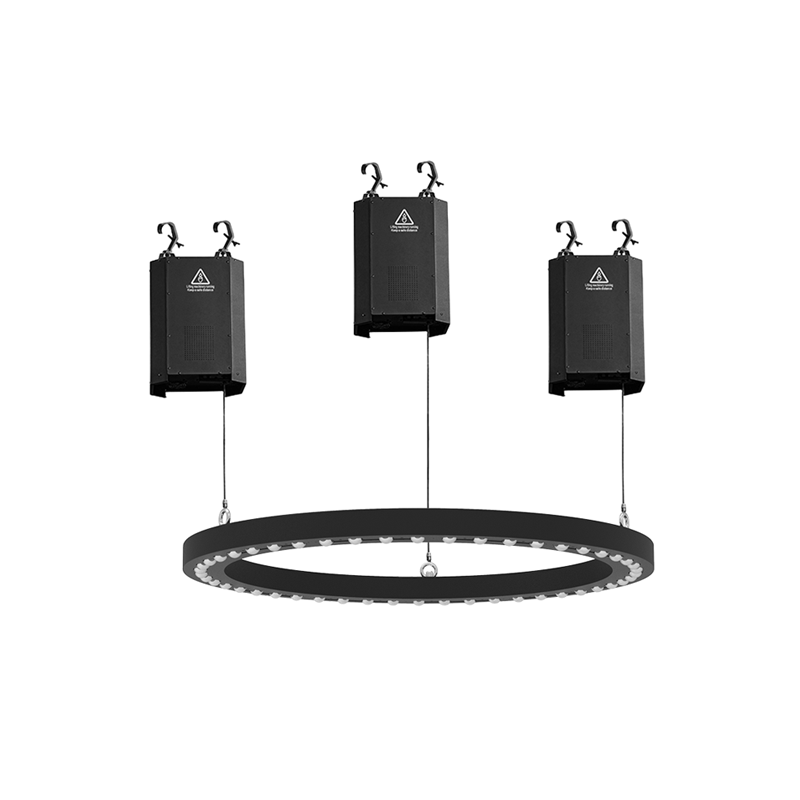Kinetic Lights Price Guide: Cost Breakdown & Buying Tips
Classification:
summary description]
If you're planning a large-scale stage show, immersive nightclub experience, or a jaw-dropping art installation, there's a good chance you've come across the term kinetic lights. These dynamic, motion-driven lights have become a go-to for designers and production teams looking to create movement, atmosphere, and energy in one powerful package.
But what's the actual price of kinetic lights? Is it just a luxury for big productions, or can smaller venues get in on the action, too?
Let's break it down.
What Exactly Are Kinetic Lights?
Kinetic lights are more than just lighting fixtures. They combine movement and lighting to create visually stunning effects, often synchronized with music or digital visuals.
These systems typically consist of LED-based lights — like balls, tubes, or rings — that move up and down via motorized winches. Controlled through DMX or other lighting protocols, they can respond to beats, cues, or programmed sequences.
You’ll see them in concerts, fashion shows, brand activations, clubs, and high-end corporate events. Anywhere someone wants to create something unforgettable.
So, How Much Do Kinetic Lights Cost?
That depends on a few key factors. There’s no one-size-fits-all answer, but here’s a breakdown to help you estimate.
1. Type of Light Fixture
Prices vary based on the fixture style and build quality. For example:
- Kinetic Ball: Expect around $150 to $400 per unit
- LED Tube (1 meter): Ranges from $180 to $500
- Kinetic Ring: Usually between $250 and $600
- Pixel Bar: Roughly $200 to $450
Higher-end models with advanced pixel mapping or brighter LEDs will naturally cost more.
2. Motorized Winch System
Each light is connected to a motorized winch — typically DMX-controlled. These winches are what allow vertical movement.
The price? Anywhere from $200 to $800 depending on lift height, weight capacity, speed, and control features.
3. Control and Software
To get the most out of your kinetic setup, you’ll need a control system — whether it’s a standalone lighting console, media server, or DMX software package.
Expect to invest between $300 and $5,000 or more, depending on scale and complexity.
Don't Forget the Other Costs
Beyond the lights and winches themselves, here are a few other things to budget for:
- Installation: Labor and rigging costs can add up, especially in venues that require custom setups.
- Shipping: Large orders — especially international ones — may come with hefty shipping fees.
- Maintenance: Motors and moving parts need upkeep. This isn’t a “set it and forget it” kind of system.
Real-World Example: Mid-Sized Installation
Let’s say you want to set up 100 kinetic balls with individual winches and a control system.
Here’s a rough estimate:
ItemEstimated Cost
100 Kinetic Balls $15,000 – $30,000
100 DMX Winch Motors $20,000 – $50,000
Control Software & Gear $2,000 – $10,000
Installation & Cabling $5,000 – $15,000
Total $42,000 – $105,000
Again, this is just a ballpark. The actual price depends on customization, brand, and production timeline.
Want the Best Deal? Here's How
1. Buy Direct from a Manufacturer
Working directly with a stage lighting factory can cut costs and give you better support. Avoid middlemen when possible.
2. Request a Tailored Quote
Instead of just browsing catalog prices, ask for a custom proposal based on your specific project — size, design, timeline, and control preferences.
3. Look for System Bundles
Some suppliers offer complete packages that include fixtures, winches, controllers, and support — often at discounted rates.
4. Start Small, Scale Later
If the budget is tight, consider a modular setup. You can always expand later with more fixtures and programming.
Why the Investment is Worth It
Kinetic lighting isn't just a "cool feature" — it’s a visual signature that transforms any event or venue.
Whether you're running a touring concert, opening a high-end club, or launching a new product, kinetic lights offer a visual experience that static lighting simply can't match. It’s the kind of detail that gets shared, remembered, and talked about long after the event ends.

Final Thoughts
The price of kinetic lights may seem high at first glance, but the value they bring to a performance or venue is undeniable. With dynamic movement, vivid color, and responsive programming, they offer a level of engagement that few other lighting systems can match.
Like any major production tool, it's all about choosing the right components, working with experienced suppliers, and planning your investment wisely.
FAQs About Kinetic Lights Price
1. Is it possible to rent kinetic lights instead of buying them?
Yes, some event production companies offer rentals for short-term use. However, for frequent use, purchasing is more cost-effective over time.
2. Do I need professional installers?
While some systems are plug-and-play, larger setups require professional rigging and DMX programming.
3. Can I sync kinetic lights with music?
Absolutely. With the right software or media server, kinetic lights can move in perfect sync with audio cues.
4. Are all kinetic lights DMX compatible?
Most professional systems are DMX or Art-Net compatible. Always confirm with your supplier.
5. How long does installation take?
That depends on scale, venue conditions, and crew experience. Small installs may take a day; large ones could span a week.
More Cases



